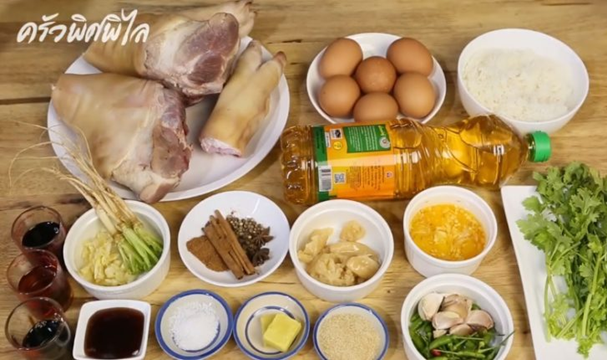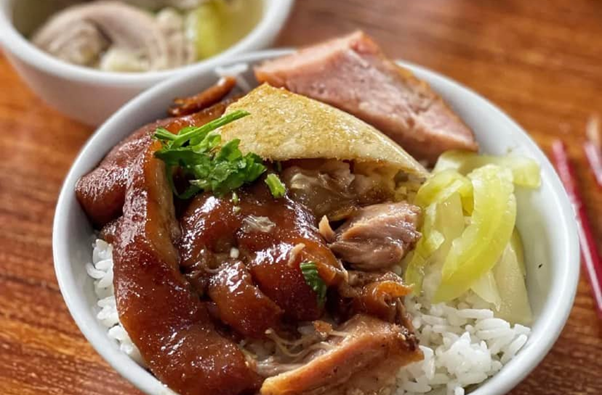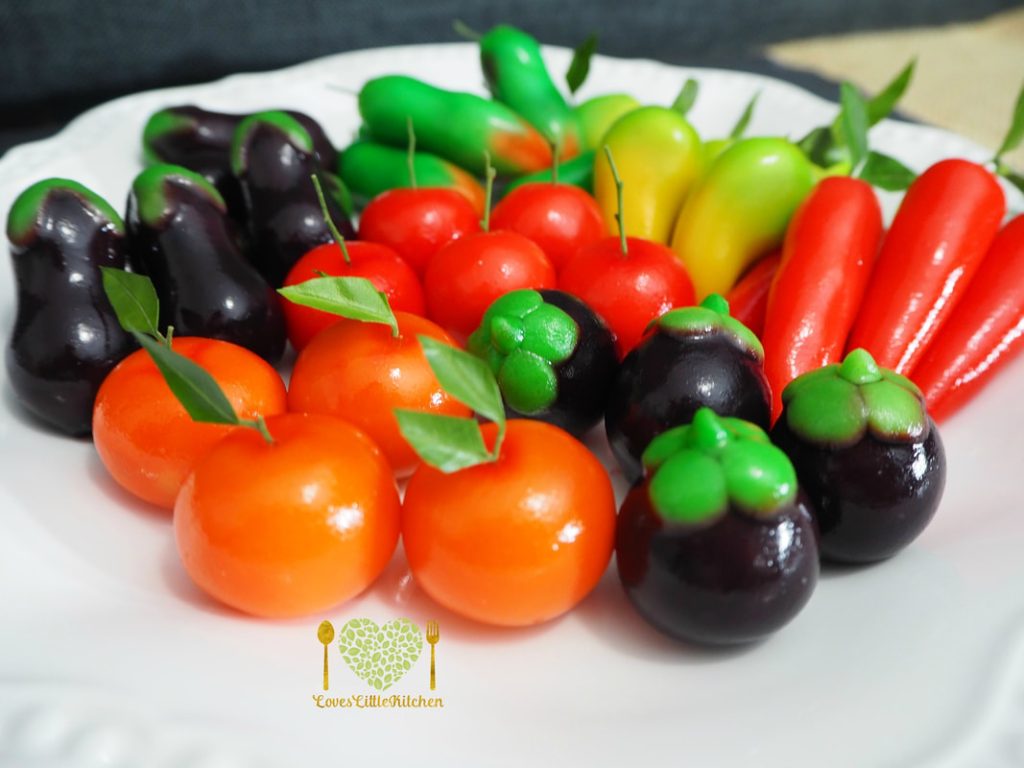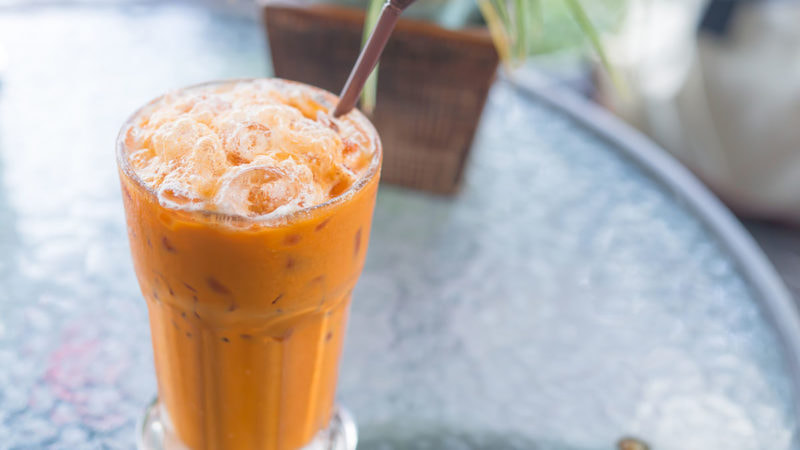Shiny, simmering, splendid – The braised pork leg dish that will show you a whole new world | What is Khao Kha Moo?
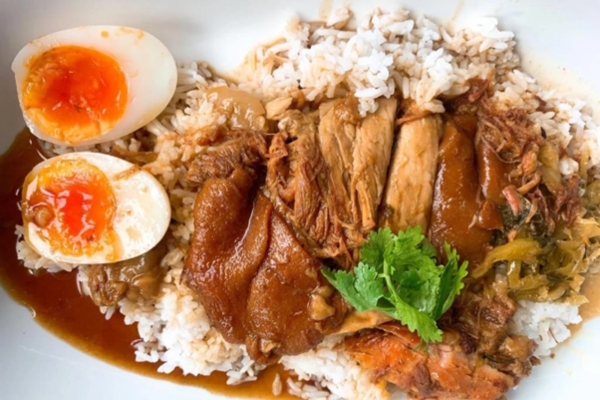
A classic plate of khao kha moo (Image source | Kha Moo Chan)
Choosing a meal in Thailand is sometimes a difficult task, so many sights, smells and sounds fight with each other to try and grab your attention. Walk through a local food court and you’ll be tempted by the hanging ducks, chickens and crispy pork, the smell of pad kra pao in the wok and the sound of somtum being made in the mortar and pestle. During my husband’s first visit to Thailand, above all else, a giant pot of simmering dark coloured broth with eggs floating on top and large chunks of meat caught his eye (and stomach). He fell in love with the fatty, sweet and salty flavours of khao kha moo instantly and it quickly became one of the three things he has on rotation at the food court.
Khao kha moo which translates to ‘rice leg pork’ is a popular quick and easy meal that can be found anywhere from mall food courts, hole in the wall eateries and food carts nestled in streets. When ordering, the vendor will tear off some meat from the pork leg in the large pot, flatten and chop it up with a cleaver and place it on a warm bed of rice. You can opt for skin or no skin and a braised boiled egg if you like. The dish is served with pickled mustard greens on the side and toppings of whole fresh chillies and garlic to help you cut through the richness and fattiness of the dish. Prik nam som – a chilli, garlic and salt based vinegary sauce is also usually available to add a bit of acidity to the dish.
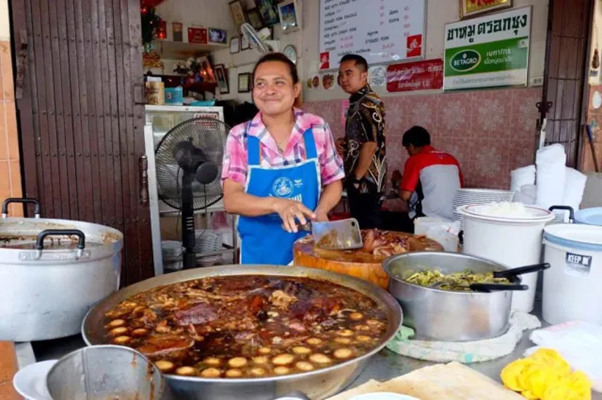
The large pot of simmering deliciousness that will grab your attention (Image source | Chow Traveller)
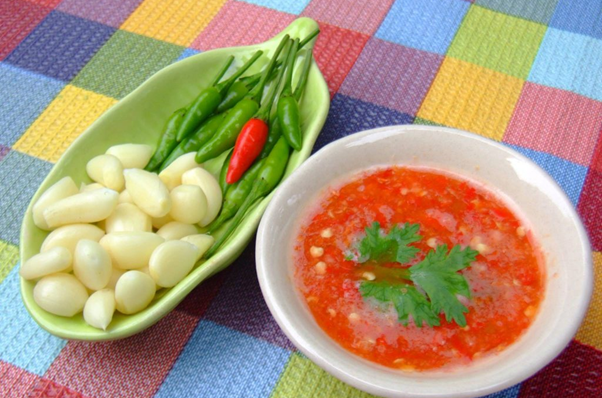
Toppings and vinegary sauce often eaten with khao kha moo (Image source | Kooktaywada)
Although khao kha moo has become a staple in Thailand, the origins of the dish actually came from afar. With war and famine happening around Southern China in the early 18th century, ethnic groups from the Guangdong area fled to Thailand. One of these groups is the Teochew people who mainly settled around the Gulf of Thailand and Bangkok. Like my mum’s parents, many people who came to Thailand started making and selling their favourite dishes, sharing the taste of home with other immigrants. They introduced new ways of cooking, unique flavours and uncommon ingredients, which have now intertwined with local food to become the delicious Thai dishes you see today.
Back in Huilai, Guangdong in China a local dish called ‘de kha bung’ or ‘pig feet rice’ continued to gain popularity over hundreds of years. A dish originally created from slowly braising a cheap cut of meat, pork trotters with herbs and spices and a Teochew style dried fish broth. Served with pickled mustard greens and warm rice, this was sold to port workers and farmers in the area at an affordable price. The dish quickly spread to other parts of China and the menu evolved to include pork leg, eggs and chinese broccoli.
The dish from its place of origin in Guangdong (Image source | Thai born Chinese)
Before the tender meat of khao kha moo can make its way to melt in your mouth, the pork leg has to go through an arduous process. The first step is to thoroughly clean and burn all the hair on the leg off then grill or deep fry it over high heat (recipe dependant). This adds extra aroma, reduces the fat layer of the pork and keeps the meat from completely falling apart. Next, the aromatics which include cinnamon, anise, a pounded mixture of garlic, peppercorn and coriander roots are sauteed until fragrant. Palm sugar is caramelised until brown then water is added. The pork leg joins in and soy sauce and oyster sauce are used to season as required.
The herbs and spices used vary from place to place and a lot of recipes are secret family knowledge that have been passed down from generation to generation, some even contain Ovaltine powder! The pork leg, boiled eggs and pickled mustard greens are simmered for many hours until the flavours are rich and deep. Some restaurants say they will start cooking one day before and let it rest overnight to let the flavours fully develop. Once ready to eat, the skin of the pork has a bouncy jelly-like texture and the meat tears apart easily. It is said that the Thai version of this dish is less salty and more sweet compared to the original Chinese version, adapting to the sweeter preferences of the Thai people.
